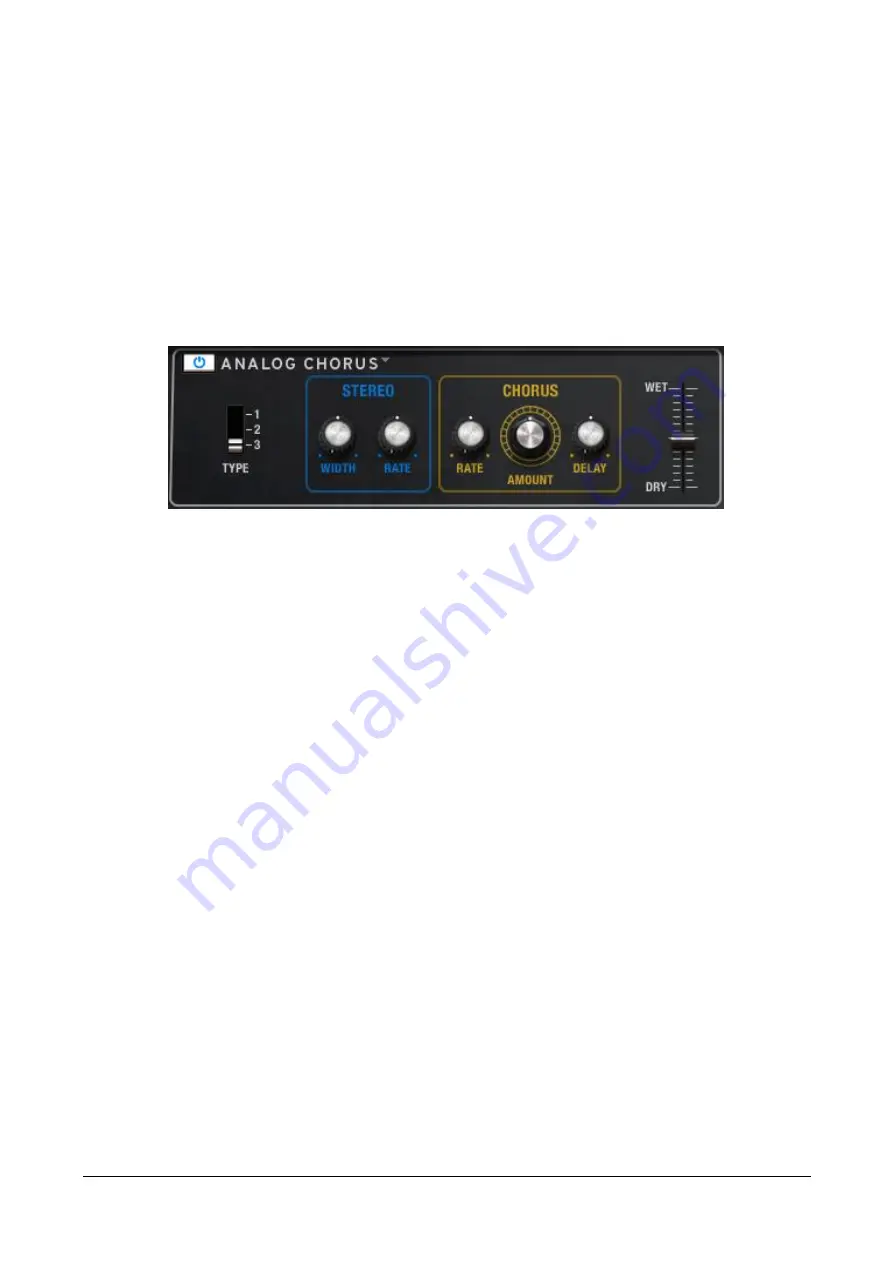
ARTURIA – Matrix-12 V – USER MANUAL
60
A flanging effect is created by combining two identical signals, delaying one of the
signals by a small amount, and then modulating the delay time. The recombined
output produces a sound that sweeps up through the harmonics of the original
signal and back down.
Flanging can create both subtle and extreme effects, depending on the Rate and
Depth of the modulation. With higher Depth settings you will begin to hear changes
to the pitch of the sound. This is how the circuits in an analog flanger work, and we
have taken care to recreate these conditions.
4.3.5
Analog Chorus
Type: Select one of three chorus types
Stereo Width: Controls the width of the stereo effect
Stereo Rate: Sets the speed of the stereo effect
Chorus Rate: Adjusts the speed of the chorus
Amount: Controls the depth of the chorus
Delay: Sets the amount of delay applied to the input signal
Wet/Dry: Changes the balance between the input signal and processed signal
A chorus module recreates the sound of multiple takes of an instrument being
combined in a mix. Even with the best of performances there are always differences
in tuning or timing, and when taken to either extreme the results can range from
slow and lush to a wobbling, quick vibrato.
The speed of the effect is set by the Chorus Rate knob, while its depth and width are
controlled by the Amount and Delay knobs, respectively. The resulting “frequency
blur” is different for the left and right halves of the signal, which allows us to derive a
stereo signal from a mono signal. The difference between the two halves then can
be set with the Stereo width, with the speed of the left-right rotation under the control
of the Stereo rate knob.
The Wet/Dry control sets the ratio between the input signal and the treated signal,
while the Type switch selects between three different chorus models: simple,
medium, and complex.
















































